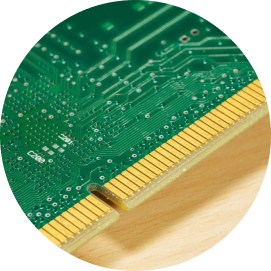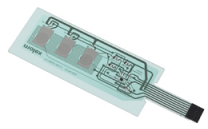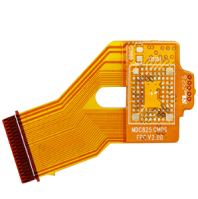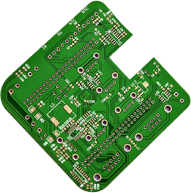Circuit Materials
Circuit Materials
When designing a custom keypad for your machine, one of the most important elements is the circuitry. After all, without it, the switch itself won't be able to carry out its essential function.
Whether you choose a tactile or nontactile switch membrane, you'll have three main options for its circuitry:

Silver
This is the most common choice for standard membrane switches. Silver conductive ink is printed right onto a polyester circuit material. While effective, the main draw of this material is its cost-effectiveness.

Copper
Companies choose a copper flex circuit when their custom keypad requires more complex circuitry. With copper, we can solder numerous components to the circuit, accommodating almost any design needs.

Rigid Printed Circuit Board
This is another great option if your custom keypad will have a complex design. A rigid printed circuit board will also support more termination options. To make these switches, we'll usually print conductive silver ink right onto a polyester layer. Then, we'll add a contact surface of etched plated copper enclosed in a printed circuit board (PCB) inside an epoxy for insulation and a dielectric layer for further protection.

Of course, the same piece of equipment could incorporate both types of circuitry. To save money, you could choose silver for any custom keypad that doesn't have complicated requirements. Then, where your keypads have more demands, you could opt for copper or a rigid PCB switch design.
Talk to an Expert About Tactile and Non-Tactile Switches
Choosing between a tactile and non-tactile switch for your company’s equipment is an important decision. It will have a huge impact on how intuitive operators find your machines.
Of course, even after you decide on tactile or non-tactile, you still have a lot of other decisions to make in order to ensure your switches work as effectively as possible.
So, don’t take any chances. Our team of designers and engineers has experience in a number of different industries. They’ll take the time to understand exactly what your unique machines need before they make their recommendations based on what else they know about your field.
For a free, no-obligation quote and to learn more about how we can help your company, call us today at352-383-8142 or fill out this simple form.
